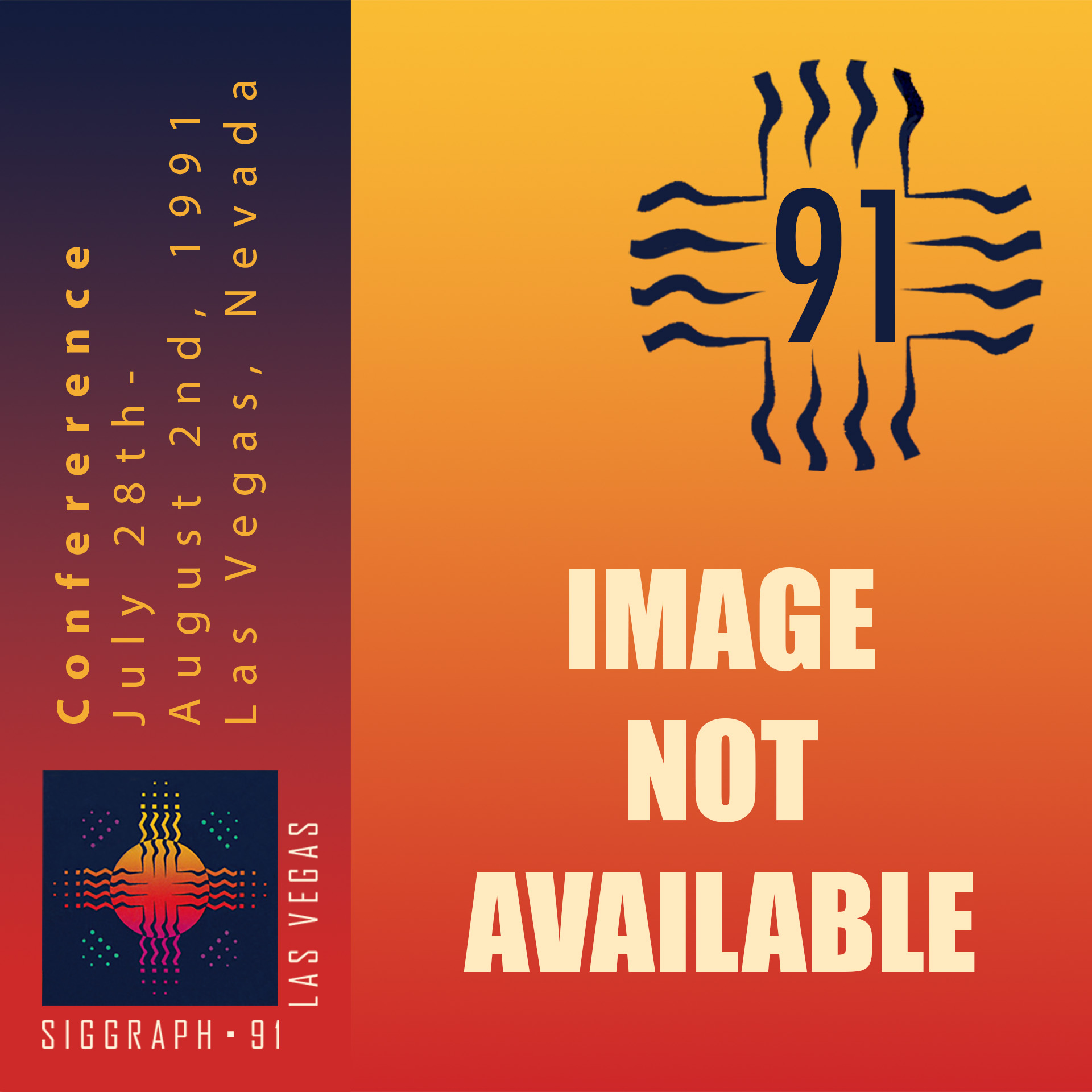“The Boeing VSX: Operations with Virtual Aircraft in Virtual Space” by Bricken, Esposito and Butler
Conference:
- SIGGRAPH 1991
-
More from SIGGRAPH 1991:


Type(s):
Title:
- The Boeing VSX: Operations with Virtual Aircraft in Virtual Space
Program Title:
- Demonstrations and Displays
Presenter(s): Presenter(s):
Project Affiliation:
- The Boeing Company
Description:
The VSX is a conceptual demonstration of how virtual space could be applied to the design of aircraft and other complex systems that require intense human interaction. The eventual user of such a virtual space design system would be an engineer or pilot who wants to evaluate an aircraft’s design for operability, maintainability, and manufacturability while it exists only in digital form.
Hardware
A VPL DataGlove and Eyephones (both with Polhemus Isotrack posi-tion/attitude trackers) are connected to the serial ports on a Macintosh Ilfx running on an isolated Ethernet segment along with a pair of Silicon Graphics 4D/300-series VGX graphics workstations (one for each eye). Video signals from each monitor are converted to NTSC and fed into the Eyephones. Final scene rendering is performed by the workstations, which present the same frame (adjusted for left or right eye) to the Eyephones at the same time, synchronized by a simple but slow message/acknowledge protocol. A faster hardware-based method is feasible, but it could not be implemented in time for SIGGRAPH ’91.
Software
Design-phase software includes Swivel-3D, which is used on the Mac to build the three-dimen-sional model of the VSX and the virtual world it occupies. Body Electric is also run on the Mac to add interactivity and dynamic behaviors to the VSX model. While Bod Electric provides a library of primitives and some basic functions like DataGlove calibration and tracking, all of the application-specific functions, such as opening hatches and interacting with flight controls, must be written in Body Electric’s dataflow language. During runtime, Body Electric talks over Ethernet to Isaac, a rendering program on the workstations. All of the objects in the virtual world are represented inside
Body Electric as points in a three-dimensional point tree. Body Electric monitors changes in position, orientation, and other attributes of the tree points due to changes in Polhemus position and orientation as well as interactions with various parts of the model. These change records are shipped over the network to the Isaac programs, which re-render the model based on the changes.
Design and construction of the SX has illuminated the level of maturity of this emerging technology and the limitations of current tools. Several of the most serious limitations of the current system flow directly from the fact that it is a closed architecture that requires a Macintosh in the loop. The Mac is at least an order of magnitude slower and its software correspondingly less capable than similar software on VGX-class machines. An additional problem in the design stage is that the Mac software provides no way to access and control many of the more advanced graphics capabilities of the workstations. The next generation of the VSX will address all of these problems. System architecture will be redesigned to generate more flexibility and power in input and display devices, 3D modeling, interactive simulation, and rendering engines.
Though the VSX is a demonstration-of-concept system, it provides a vivid experience, and it has stimulated interest in defining requirements for a wide variety of application areas. The limits on current technology, combined with the application requirements, provide a baseline to define the technology development that must be accomplished to put virtual space to work for aircraft design.
Other Information:
Application: Engineering design, aerospace
Type of System: Authoring and player, single-user
Interaction Class: Immersive, inclusive




